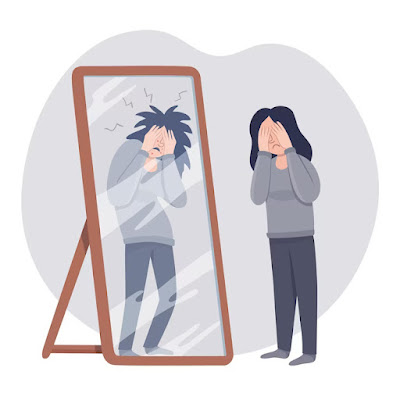Understanding Panic Disorder: Symptoms, Causes, and Treatment
Panic disorder is a type of anxiety disorder characterized by recurrent, sudden panic attacks. These panic attacks are intense periods of fear or discomfort that typically last for 10 to 20 minutes and are accompanied by physical symptoms such as palpitations, sweating, trembling, and shortness of breath.
Panic disorder can have a significant impact on an individual's quality of life, causing them to avoid certain situations or activities that trigger panic attacks. In this article, we will delve into the nature of panic disorder, its causes, symptoms, and treatment options.
Understanding Panic Disorder
Panic disorder is a mental health condition that affects millions of people worldwide. People with panic disorder experience panic attacks that can be triggered by a variety of stimuli, including specific situations or activities, or can occur spontaneously. Panic attacks can cause significant distress and disruption to an individual's daily life, leading to feelings of anxiety and avoidance.
Panic disorder is different from a single panic attack, which can be a normal response to stress or a traumatic event. Panic disorder is diagnosed when an individual experiences recurrent panic attacks and is concerned about having more in the future. These attacks are often accompanied by persistent worry about when and where the next attack will occur and intense fear of the physical symptoms that accompany panic attacks.
Causes of Panic Disorder
The exact cause of panic disorder is not fully understood, but it is believed to be the result of a combination of biological, psychological, and environmental factors. Some of the most commonly cited causes of panic disorder include:
Genetics: Panic disorder can run in families, suggesting that there may be a genetic component to the condition.
Brain chemistry: Imbalances in neurotransmitters, the chemicals that transmit signals between brain cells, have been linked to panic disorder.
Trauma: Exposure to traumatic events, such as abuse, accident, or war, can increase the risk of developing panic disorder.
Stress: Chronic stress and high levels of anxiety can increase the risk of panic disorder.
Substance abuse: Substance abuse, especially the use of stimulants like cocaine or amphetamines, can increase the risk of panic disorder.
Symptoms of Panic Disorder
Panic disorder is characterized by the presence of panic attacks, which are sudden, intense periods of fear or discomfort. Some of the most common symptoms of panic disorder include:
Palpitations: A rapid heartbeat or fluttering sensation in the chest.
Sweating: Excessive sweating, especially on the palms, forehead, or underarms.
Trembling or shaking: A feeling of weakness or unsteadiness.
Shortness of breath: Difficulty breathing or feeling as though you can't get enough air.
Choking: A sensation of choking or difficulty swallowing.
Chest pain or discomfort: Chest pain or tightness.
Nausea or abdominal distress: Feeling sick to your stomach or having abdominal discomfort.
Dizziness or lightheadedness: Feeling dizzy or unsteady.
Tingling or numbness: A feeling of tingling or numbness in the hands, feet, or face.
Chills or hot flashes: A sudden feeling of warmth or cold.
Fear of losing control or dying: Intense fear or a sense of impending doom.
Avoidance Behavior: Avoidance of certain situations or activities that trigger panic attacks.
Diagnosing Panic Disorder
Diagnosing panic disorder requires a comprehensive evaluation by a mental health professional, such as a psychiatrist, psychologist, or licensed therapist. The evaluation will typically involve a thorough medical and psychological history, a physical examination, and laboratory tests to rule out any medical conditions that may be contributing to the symptoms.
In addition, a mental health professional may also use standardized diagnostic tools, such as the Diagnostic and Statistical Manual of Mental Disorders (DSM-5) or the Mini International Neuropsychiatric Interview (MINI), to assess the symptoms and determine the presence of panic disorder.
Treatment for Panic Disorder
There are a number of effective treatments for panic disorder, including:
Cognitive-behavioral therapy (CBT): CBT is a type of therapy that focuses on changing negative thoughts and behaviors. This therapy can help individuals with panic disorder learn coping strategies and identify triggers that lead to panic attacks.
Medication: Antidepressant and antianxiety medications can be effective in reducing the symptoms of panic disorder. Commonly prescribed medications include selective serotonin reuptake inhibitors (SSRIs), benzodiazepines, and beta-blockers.
Exposure therapy: This type of therapy involves gradually exposing the individual to the situations or activities that trigger panic attacks in a controlled and safe environment. Over time, the individual will learn to manage their panic attacks and reduce their fear and avoidance behavior.
Relaxation techniques: Relaxation techniques, such as deep breathing, progressive muscle relaxation, and visualization, can help to reduce stress and calm the body during a panic attack.
Lifestyle changes: Making healthy lifestyle changes, such as regular exercise, a balanced diet, and getting adequate sleep, can help to reduce the symptoms of panic disorder.
Also Read: 10 Tips on How to heal wounds faster Naturally
Conclusion
Panic disorder is a serious and debilitating condition that affects millions of people worldwide. Understanding the causes, symptoms, and treatment options for panic disorder can help individuals get the help and support they need to manage their condition and improve their quality of life.
If you or someone you know is struggling with panic disorder, seek help from a mental health professional as soon as possible. With the right treatment, individuals with panic disorder can learn to manage their symptoms and regain control over their lives.





Comments
Post a Comment